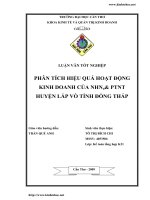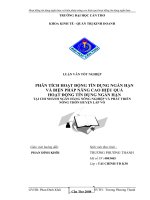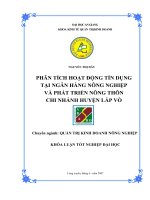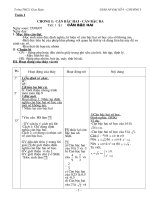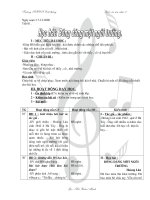E7 4 COT LAP VO U13 2012
Bạn đang xem bản rút gọn của tài liệu. Xem và tải ngay bản đầy đủ của tài liệu tại đây (103.1 KB, 8 trang )
<span class='text_page_counter'>(1)</span><div class='page_container' data-page=1>
<b>WEEK</b>
<b>28th</b>
<b>UNIT 13: ACTIVITIES</b>
<b>Lesson 1: A1,2</b>
<b>PERIOD</b>
<b>83rd</b>
<b>DATE CREATED: March 22th<sub>, 2012</sub></b>
<i><b>Objective</b><b> : By the end of the lesson, students will be able to know about the</b></i>
popular sports in America.
<b>Teaching aids: Posters, pictures, textbook, flashcards, projector.</b>
<i><b>T</b></i> <i><b>Stages and Contents</b></i> <i><b>T’s activities</b></i> <i><b>Ss’activities</b></i>
5’
10’
5’
<b>I/- WARM UP: BRAINSTORMING</b>
<i><b> (name of sports)</b></i>
Soccer, badminton, volleyball, swimming, table
tennis, sport, jog, aerobics, skip rope,
basketball…
<b>II/- PRE-READING:</b>
<b>1/- Vocabulary:</b>
_ baseball (n): bong chày (picture)
_ skateboarding (n): lướt ván trượt (picture)
_ roller-skating (n): trượt patanh (bánh xe 4 góc)
_ rollerblading (n): trượt patanh (bánh xe nằm
dọc)
_ popular (adj): phổ biến (translation)
_ surprisingly (adv): một cách đáng ngạc nhiên
(translation)
<i><b>2/- Check memory: MATCHING</b></i>
<b>3/- Set the scence: </b>
<b>4/- OPEN PREDICTION</b>
Soccer swimming
tennis
baseball
badminton
basketball
<b>III/- WHILE-READING:</b>
* Check:
1. Baseball
2. Skateboarding
- Divide ss into
two teams and
guide ss to play
game.
- Introduce the
new lesson.
- Follow steps
of teaching
vocabulary.
- Show a
picture to the sts
and lead-in
- Put these
statement on the
bb and get ss’
predictions.
- Let ss read
the text and check
- Listen and
play game.
- Listen.
- Follow the
teacher’s
instructions.
- Listen to
the teacher and
give their
predictions.
- Read the
The ten
</div>
<span class='text_page_counter'>(2)</span><div class='page_container' data-page=2>
15’
10’
3. roller-skating
4. Rollerblading
5. Basketball
6. Football
7. Volleyball
8. Tennis
9. Badminton
10. Swimming
<b>QUESTION COMPREHENTION</b>
1. What questions does the survey ask
teenagers?
They asked “ What sports do you like?”
2. What sport was the most popular choice? Is it
one of the world’s most popular games?
Baseball. No, it isn’t.
3. What other sport do many teenagers like?
Table tennis.
<b>IV/- POST-READING:</b>
<b>DISCUSSION</b>
a. Is baseball your favorite sport? If not, what is
your first choice?
b. Do you like table tennis?
<i><b>Take a survey:</b></i>
Sport Number of ss Position
Soccer
Badminton
Volleyball
Football
Swimming
Table tennis
Basketball
<b>V/- FOLLOW-UP:</b>
their predictions.
- Put these
questionss on the
bb and run
through clearly.
- Asks ss read
the text carefully
and answer the
questions.
- Get ss’
answers and
correct some
common
mistakes.
- Divide ss into
four groups.
- Give clear
instructions.
- Give
instruction
text and check.
- Listen.
- Read the
text carefully to
answer the
questions.
- Give the
answers and
correct the
mistakes.
- Listen and
do what the
teacher says.
<i><b>Feedback:</b></i>
………
………
<b>WEEK</b>
<b>28th</b>
<b>UNIT 13: ACTIVITIES</b>
<b>Lesson 2: A3,5</b>
</div>
<span class='text_page_counter'>(3)</span><div class='page_container' data-page=3>
<b>DATE CREATED: March 22th<sub>, 2012</sub></b>
<i><b>Objective</b><b> : By the end of the lesson, students will be able to know how to use</b></i>
adjectives and adverbs in sentences.
<b>Teaching aids: Posters, pictures, textbook, flashcards, projector</b>
<i><b>T</b></i> <i><b>Stages and Contents</b></i> <i><b>T’s activities</b></i> <i><b>Ss’activities</b></i>
5’
10’
5’
<b>I/- WARM UP:</b>
<b>WORD SQUARE</b>
Good, well, volleyball, player, swim, slow, quick,
bad, play, tennis, summer, water, children
<b>II/- PRESENTATION:</b>
<b>1/- Vocabulary:</b>
_ skillful (adj): điêu luyện, có kĩ thuật
(explanation)
_ safe (adj): an toàn (explanation)
_ clear (adj): rõ ràng (translation)
_ careless (adj): bất cẩn (antonym)
_ strict (adj): nghiêm khắc (situation)
_ (to) cycle: đạp xe
→ cyclist (n) : người đi xe đạp
_ (to) run: chạy (mime)
<b>2/-Check memory: MATCHING</b>
<b>3/- Set the scene</b>
<b>4/- PRESENTATION </b>
* Set the scene.
<i><b>Model sentences</b><b> :</b></i>
She is a quick runner.
She run quickly.
<i><b>Form:</b><b> adj → adv</b></i>
Adj + ly → adv
<b>III/- PRACTICE:</b>
<b>WORD CUE DRILL</b>
_ he / good soccer player
Play…….
_ he / skillful volleyball player
Play……..
_ she / slow swimmer
Swim…….
_ she / bad tennis player
Play………
- Divide ss
into two teams
and guide ss to
play game.
- Introduce
the new lesson.
- Follow steps
of teaching
vocabulary.
- Introduce
the situations
and presents
the examples.
- Ask
students some
questions to
elicit the form.
- Run through
these cues and
follow other
steps of a drill.
- Listen and
play game.
- Listen.
- Follow the
teacher’s
instructions.
- Listen to
the teacher.
- Answer the
teacher’s
questions.
- Copy.
</div>
<span class='text_page_counter'>(4)</span><div class='page_container' data-page=4>
15’
10’
_ she / safe cyclist
Cycle……
<i><b>Example exchange:</b></i>
He is a good soccer player.
He plays well.
<b>IV/- PRODUCTION</b>
<i><b>A5. Write. Change the adjectives in brackets </b></i>
<i><b>to adverbs.</b></i>
Clear → clearly
Careful → carefully
Safe → safely
Careless → carelessly
Strict → strictly
<i><b>Language focus 5 (exercise 1)</b></i>
a. Check the correct box
Adjective Adverb
Dangerous v
Slowly v
Skillfully v
Good v
Bad v
Quickly v
b. Complete the sentences:
A. He ran……….(quick / quickly)
B. My grandmother walks………. (slow / slowly)
C. What a………..baby! He sleeps all night and
he never cries during the day. (good / well)
D. Rock climbing is a…………activity.
(dangerous / dangerously)
E. Lan is a…………volleyball player. (skillful /
skillfully)
<b>V/- FOLLOW-UP:</b>
Exercises 1 and 2 (page 82- workbook)
- Run through
A5 and ask
students to
change the
adjectives to
adverbs.
- Ask
students to open
the book
(language focus
5) to do the
exercises.
- Run through
these sentences
and ask
students to
underline the
suitable words.
teacher’s
instructions.
- Listen to
the teacher.
- Change
adjectives to
adverbs.
- Tick.
- Underline.
<i><b>Feedback:</b></i>
………
………
………
<b>WEEK</b>
<b>29th</b>
<b>UNIT 13: ACTIVITIES</b>
<b>PART A : SPORTS. Lesson 1: A4</b>
<b>PERIOD</b>
<b>85th</b>
<b>DATE CREATED: March 26th<sub>, 2012</sub></b>
</div>
<span class='text_page_counter'>(5)</span><div class='page_container' data-page=5>
<b>Teaching aids: Posters, pictures, textbook, flashcards, projector</b>
<i><b>T</b></i> <i><b>Stages and Contents</b></i> <i><b>T’s activities</b></i> <i><b>Ss’activities</b></i>
5’
10’
5’
15’
<b>I/- WARM UP:</b>
<b>SHARK ATTACK</b>
W A L K I N G
<b>II/- PRE-READING:</b>
<b>1/- Vocabulary:</b>
_ (to) take part in : tham gia (explanation)
_ (to) organize: tổ chức (explanation)
_ (to) increase: tăng lên (antonym)
_ (to) volunteer : tình nguyện (explanation)
_ prize (n) : giải thưởng (realia)
_ ability (n): khả năng (translation)
_ participant (n): người tham gia (explanation)
_ competition (n): cuộc thi (picture)
_(to) win : chiến thắng
<b>2/- Check memory: BINGO</b>
<b>3/- Set the scene</b>
<b>4/- T / F PREDICTION</b>
a. “WFF” is the short form of “ Walking For Fun”.
b. The number of participants doesn’t increase.
c. They walk to the beach every morning.
d. Walking is a fun, easy and inexpensive activity.
<b>III/- WHILE-REAING:</b>
* Feedback
a. T
b. F
c. F
d. T
<b>COMPREHENSION QUESTIONS</b>
a. What sports activity does the writer take part
in?
He takes part in Walking For Fun club.
b. Why did the school children organize the
WFF?
Because the writer’s school team won the first
prize in the district walking competition, they were
so happy and wished to keep this activity.
c. What are the two activities of the club?
One activity is a five kilometer walk to the
beach on Sunday morning; and the other is
walk-- Divide ss
into two teams
and guide ss to
play game.
- Introduce the
new lesson.
- Follow steps
of teaching
vocabulary.
- Show a
picture and
lead-in
- Put these
statements on
the bb and get
ss’ predictions.
- Let ss read
the text and
check their
predictions.
- Put these
questions on the
bb and run
through clearly.
- Ask ss read
the text carefully
and answer the
questions.
- Get ss’
answers and
- Listen and
play game.
- Listen.
- Follow the
teacher’s
instructions.
- Listen to
the teacher and
give their
predictions.
- Read the
text and check.
</div>
<span class='text_page_counter'>(6)</span><div class='page_container' data-page=6>
10’
to-school day.
d. How far is it from the school to the beach?
It’s five kilometers from the school to the beach.
e. Which day of the week is the WTS day of the
club?
Wednesday is the WTS day.
f. Who often take part in the WTS day?
Members living near school often take part in
the WTS day.
<b>IV/- POST-READING:</b>
<b>WRITE IT UP:</b>
_ Talk something about Walking activity in your
own words.
_ Do you have any activity in your school? What?
<i><b>Homework:</b></i>
Exercise 3 (page 83-workbook)
correct some
common
mistakes.
- Divide ss
into four groups.
- Give clear
instructions.
- Give the
answers and
correct the
mistakes.
- Listen and
do what the
teacher says.
<i><b>EXPERIENCE:</b></i>
………
………
………
………
………
<b>WEEK</b>
<b>29th</b>
<b>UNIT 13: ACTIVITIES</b>
<b>PART B: COME AND PLAY. Lesson 4: B1</b>
<b>PERIOD</b>
<b>86th</b>
<b>DATE CREATED: March 28th<sub>, 2012</sub></b>
<i><b>Objective</b><b> : By the end of the lesson, students will be able to improve</b></i>
reading , listening skill and speaking to talk about sports.
<b>Teaching aids: Posters, pictures, textbook, flashcards, projector</b>
</div>
<span class='text_page_counter'>(7)</span><div class='page_container' data-page=7>
5’
7’
5’
15’
<b>I/- WARM UP:</b>
<b>SLAP THE BOARD</b>
<b>II/- PRE-LISTENING AND READING:</b>
<b>1/- Vocabulary:</b>
_ paddle (n): cây vợt (bóng bàn)(realia)
_ (to) borrow: mượn (explanation)
_ (to) play chess: ch ơi đ ánh c ờ (picture)
_ spare (adj): dư, thừa (explanation)
<b> 2/- Check memory: ROR</b>
<b>3/- Set the scene</b>
<b>4/- OPEN PREDICTION</b>
volleyball
baseball
soccer tennis
basketball table tennis
<b>III/- WHILE-LISTENING AND READING:</b>
<i><b>Check</b><b> :</b></i>
They are going to play table tennis.
<b>COMPREHENSION QUESTIONS</b>
a. What should Nam do before he plays table
tennis?
Nam should finish his homework before he plays
table tennis.
b. When will Nam be ready?
He will be ready in a few minutes.
c. What will Ba do?
He will finish the questions for Math tomorrow.
d. How many paddles does Ba have?
He has two paddles.
- Show the
poster & guide
- Introduce
the new lesson
- Follow
steps of
teaching
vocabulary
- Show a
picture and
lead-in
- Run
hrough & get
ss’ prediction
- Play the
tape and ask
ss to listen and
check.
- Run
through the
questions
- Ask ss to
listen to the
tape and
- Listen &
play games
- Listen
- Follow the
T’s instructions
- Listen
- Give their
prediction
- Listen to
the tape and
answer the
- Questions.
- Give the
Going to
play
Cầu
lơng
bóng
bàn
Bóng
chày
b óng
chuy ền
bóng
đá
bóng
</div>
<span class='text_page_counter'>(8)</span><div class='page_container' data-page=8>
10’
3’
<b>IV/- POST-LISTENING AND READING:</b>
<b>STRUCTURE</b>
<b>S+OUGHT TO/MUST/ HAVE TO + V</b>
<b>Usage: to talk about a mission or a duty</b>
<b>ROLE-PLAY</b>
<b>V/- FOLLOW-UP:</b>
Learn by heart the new words.
Practice the dialogue
Prepare lesson 5: B3
answer the
questions.
- Give
feedback.
- Run
through the
dialogues
models & let
ss work in
pairs.
- Ask sts to
play roles to
make a
dialogue
answers.
- Work in
pairs to practice
the dialogue
and make
similar
dialogues.
<i><b>EXPERIENCE:</b></i>
</div>
<!--links-->
